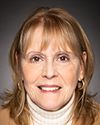Certainly.
Our OAICC members are mostly women who took a risk and opened up a child care centre. They took out loans and mortgages on their houses. It's very expensive. We're talking hundreds of thousands, going into the millions, to open a centre.
Some of these women are recent immigrants who took their life savings and said, “I'm going to open a centre. This is something I know how to do.” They may be people coming from an education background, like me. I was a teacher for 27 years before I opened my centre.
Generally speaking, the women in our organization opened centres for a reason: They needed a centre, or they couldn't find child care for their child. I tried to open a non-profit, and I couldn't, because I couldn't borrow a million dollars. If I had told the bank I wasn't making any money, they wouldn't partner with me or lend me that money.
Realistically, child care has been needed and it has been provided by these women entrepreneurs who took the risk and stepped up. They provided that care and they have been providing that care. They are carrying the loans and the mortgages. There is the unpaid labour and sweat equity. Some of them now, because funding is not recognizing those areas, may possibly lose their centres. They are constantly being—





